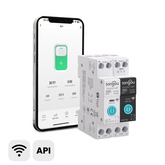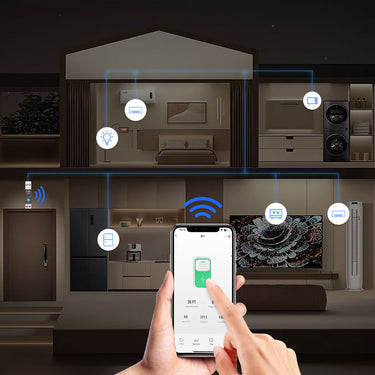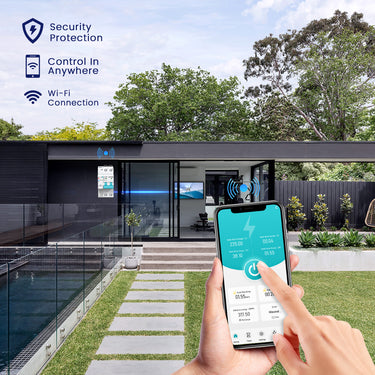Benefits of Using Automatic Transfer Switches at Home

Power outages. They're more than just an inconvenience; they can disrupt your life, compromise your safety, and even damage your valuable appliances. Whether it's a sudden storm, grid instability, or planned maintenance, losing power is a growing concern for homeowners everywhere. But what if you could ensure your home seamlessly transitions to backup power the moment the grid goes down, without lifting a finger? This is where Automatic Transfer Switches (ATS) come into play.
If you're exploring home backup power solutions and wondering about the "benefit of automatic transfer switch," or how to effectively "manage power with ATS," you've landed in the right place. This comprehensive guide will walk you through the prerequisites, necessities, and compelling benefits of installing an automatic transfer switch in your home. We'll also delve into various applications to help you understand if an ATS is the right solution for you.
Understanding Automatic Transfer Switches: Seamless Power Transition
Before we dive into the benefits, let's clarify what an Automatic Transfer Switch (ATS) actually is. In simple terms, an ATS is a smart electrical device that acts as a bridge between your home's electrical system, the utility grid power, and a backup power source, typically a standby generator or sometimes an alternative power system like solar with battery storage.
Here's how it works:
-
Constant Grid Monitoring: The ATS continuously monitors the incoming utility power.
-
Outage Detection: If the ATS detects a power outage from the grid, it immediately senses the loss of power.
-
Automatic Generator Start (if applicable): In most home setups, the ATS is connected to a standby generator. Upon detecting an outage, the ATS sends a signal to automatically start the generator.
-
Seamless Power Transfer: Once the generator is running and stable, the ATS automatically disconnects your home from the utility grid and transfers the electrical load to the generator. This entire process usually happens within seconds, ensuring a near-instantaneous restoration of power.
-
Return to Grid Power: When utility power is restored, the ATS senses its return, automatically transfers your home back to grid power, and shuts down the generator (after a cool-down period in some cases).
Prerequisites for Installing an Automatic Transfer Switch at Home: Getting Ready for Backup Power
Before enjoying the benefits of an ATS, there are a few key prerequisites to consider:
-
Backup Power Source: An ATS is designed to work with a backup power source. The most common pairing is with a standby generator. You'll need to choose a generator with sufficient power capacity to run essential circuits or your entire home, depending on your needs. Less commonly, ATS can be used with battery backup systems.
-
Compatible Electrical Panel: Your home's electrical panel needs to be compatible with an ATS installation. Most modern electrical panels are suitable, but it's essential to confirm compatibility with a qualified electrician.
-
Professional Installation is Crucial: Installing an ATS is not a DIY project. It involves working with high voltage electricity and requires a deep understanding of electrical systems and local codes. Always hire a licensed and experienced electrician to install your ATS to ensure safety and proper functionality. This is paramount for your safety and to comply with electrical regulations.
-
Permits and Inspections: Depending on your location, you may need to obtain permits for generator and ATS installation and undergo electrical inspections to ensure compliance and safety. Your electrician can guide you through this process.
Necessities of an ATS: Why is Automatic Transfer Essential?
While you could technically use a portable generator and manually connect it to your home during an outage (using extension cords – which is generally discouraged and often unsafe for whole-house backup), an ATS addresses critical necessities and provides significant advantages over manual methods:
-
Safety – Eliminating Backfeed Dangers: Manually connecting a generator to your home's wiring without proper isolation from the grid can create a dangerous "backfeed" situation. This can energize power lines, posing a lethal risk to utility workers and neighbors. An ATS provides a safe and code-compliant way to isolate your home from the grid during generator operation, preventing backfeed.
-
Convenience and Automation – Hands-Free Power Restoration: Imagine a power outage in the middle of the night or when you're away from home. With an ATS, your backup power kicks in automatically. No fumbling in the dark, no manual switching, no hassle. ATS offers true peace of mind and seamless power restoration without any manual intervention.
-
Appliance Protection – Preventing Damage from Power Fluctuations: Power outages and surges that often accompany power restoration can damage sensitive electronic appliances like computers, TVs, and refrigerators. A properly installed ATS, in conjunction with surge protection, helps to protect your appliances from voltage fluctuations and power surges during outages and power transitions.
-
Maintaining Essential Services – Uninterrupted Comfort and Security: During an outage, you rely on essential systems like heating/cooling, refrigerators for food preservation, medical equipment, and security systems. An ATS ensures these critical systems remain operational, maintaining comfort, safety, and security for your family.
Key Benefits of Using Automatic Transfer Switches at Home: Unlocking Peace of Mind and Enhanced Living
The benefits of investing in an automatic transfer switch extend far beyond just having backup power. They offer a range of advantages that significantly enhance your home and lifestyle:
-
Seamless and Instantaneous Power Restoration: As mentioned, the most significant benefit is the automatic and near-instantaneous switch to backup power. No waiting, no manual steps, just continuous power when you need it most.
-
Enhanced Safety for Your Home and Family: Safety is paramount. ATS eliminates the dangers associated with manual generator connections, protecting your home, family, and utility workers from backfeed hazards. This is a non-negotiable benefit.
-
Unparalleled Convenience and Ease of Use: Enjoy the ultimate convenience of automated backup power. No need to worry about manually setting up a generator during storms or emergencies. The ATS handles everything automatically, providing worry-free operation.
-
Protection for Sensitive Appliances and Electronics: Safeguard your valuable appliances and electronics from power surges and fluctuations associated with outages and power restoration. Protect your investments and avoid costly repairs or replacements.
-
Increased Home Value and Appeal: Installing a standby generator with an ATS is a valuable home improvement that can increase your property value and make your home more attractive to potential buyers. It's a feature that adds tangible value and peace of mind.
-
Uninterrupted Operation of Critical Home Systems: Maintain essential home functions like heating, cooling, refrigeration, lighting, security systems, and medical equipment during power outages. Ensure comfort, safety, and well-being for your family, especially during extended outages.
-
Peace of Mind and Reduced Stress: Knowing that your home is equipped with an automatic backup power system provides invaluable peace of mind. You can rest assured that you'll be prepared for power outages, minimizing stress and disruption to your life.
Expanding the Scope: When is an ATS Particularly Beneficial?
While an ATS provides benefits for any homeowner concerned about power outages, they are particularly advantageous in specific scenarios:
-
Areas Prone to Frequent or Prolonged Power Outages: If you live in a region with frequent storms, unreliable grid infrastructure, or planned outages, an ATS is a must-have for reliable power backup.
-
Homes with Critical Medical Equipment: For households relying on life-support equipment or other essential medical devices that require continuous power, an ATS is absolutely critical for safety and well-being.
-
Remote or Rural Properties: Homes in remote locations often experience more frequent and longer power outages due to less robust infrastructure. ATS provides crucial self-reliance.
-
Home Businesses and Remote Workers: If you work from home or run a home-based business, power outages can directly impact your productivity and income. ATS ensures business continuity.
-
Homes with Smart Home Technology: Smart homes often rely heavily on consistent power for automation, security, and convenience features to function. ATS keeps your smart home running smoothly during outages.
-
Vacation Homes or Properties Left Unattended: For vacation homes or properties left vacant for extended periods, an ATS can ensure critical systems like sump pumps, security systems, and temperature control remain operational, preventing damage and maintaining security.
Conclusion: Invest in Reliability and Peace of Mind with an Automatic Transfer Switch
Power outages are an unavoidable reality, but being unprepared doesn't have to be. Automatic Transfer Switches offer a robust, safe, and incredibly convenient solution for home backup power. The benefits of automatic transfer switches extend far beyond simply having electricity during an outage; they provide safety, convenience, appliance protection, increased home value, and most importantly, unshakeable peace of mind.
If you value uninterrupted comfort, safety, and the protection of your home and family, investing in an automatic transfer switch is a wise and responsible decision. Don't wait until the next power outage to wish you had backup power – prepare now and experience the difference an ATS can make.
Ready to take control of your home's power and never be left in the dark?
Contact a licensed electrician today to discuss your backup power needs and explore the best Automatic Transfer Switch and generator solutions for your home. Ensure your home is ready for anything!
Exprole Tongou Automatic Transfer Switch TOATS















